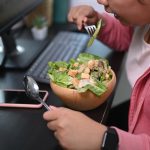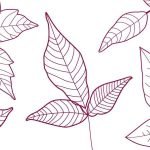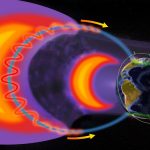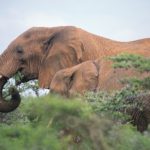A new study finds a subtle dance between dark matter and neutrinos
Time again for a tale of things dark and mysterious. A tale of dark matter. It's a well-told tale, but this time it involves...
Scientists make clean hydrogen from sunlight and water—no platinum needed
Hydrogen is often described as a dream fuel for a cleaner future. When it is used, it produces only water, not carbon dioxide.
But turning...
Grasshopper wings spark a new way for robots to glide
Sometimes scientific breakthroughs begin in unlikely places. For a team of engineers and entomologists from Princeton University and University of Illinois Urbana-Champaign, it started...
Hacking the unhackable? Why quantum computers need a new kind of cybersecurity
Quantum computers are often described as the future of computing.
They promise enormous speed and power that could transform medicine, finance, materials science, and many...
Common pesticide may increase risk of Parkinson’s disease
A new study from UCLA Health has found that living near areas where the pesticide chlorpyrifos was used for long periods may increase the...
Scientists find the hidden source of powerful gamma rays
When the Sun unleashes its most violent eruptions, known as solar flares, it floods space with intense radiation, including powerful gamma rays.
For decades, scientists...
Your sleep could reveal your future health, AI shows
A bad night of sleep usually means feeling tired the next day. But it could also be a warning sign for serious health problems...
AI can see thyroid cancer clearly in surgery
Thyroid cancer is the most common type of cancer in the endocrine system, and the number of cases keeps rising as more people are...
Young galaxies grow up fast, study finds
Astronomers have captured the most detailed look yet at faraway galaxies at the peak of their youth, an active time when the adolescent galaxies...
Why cooling chips to −60°c makes etching up to five times faster
After more than ten years of development, engineers have unveiled a new semiconductor etching method that could significantly speed up chip manufacturing while reducing...
Scientists find an unexpected metal that could make hydrogen fuel cheaper
A metal most people rarely think about may play an important role in the future of clean energy.
Researchers from Yale University and the University...
Astronomers see a supernova from 10 billion years ago using nature’s own telescope
Astronomers have discovered something truly remarkable: the first-ever gravitationally lensed superluminous supernova that can be seen as multiple, clearly separated images.
The distant explosion, named...
FEATURED
Scientists find huge hydrogen reservoir under ocean floor
Scientists have uncovered evidence of a vast natural hydrogen system deep beneath the Pacific Ocean, a discovery that could one day provide a new...
Scientists find 3 genes linked to being a vegetarian
Choosing to go vegetarian is often perceived as a straightforward dietary preference or a conscious moral choice.
However, a recent Northwestern Medicine study explores a...
Identifying poison ivy gets trickier with plant variability, shows study
The saying "leaves of three, let it be" is a well-known advice to avoid the itchy wrath of poison ivy. However, this catchy rhyme...
Scientists discover new source of super-fast electron rain raining down on Earth
UCLA scientists have discovered a new source of super-fast, energetic electrons raining down on Earth, a phenomenon that contributes to the colorful aurora borealis...
Elephants: The unsung heroes sustaining millions of dung beetles in East Africa
Have you ever wondered how many dung beetles live in East Africa?
This question inspired a research project over 20 years ago when Frank Krell,...




















